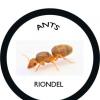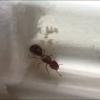- Formiculture.com
- Forums
- Gallery
- Members
- Member Map
- Chat

OiledOlives Miscellaneous Colonies
Started By
OiledOlives
, Jan 14 2022 5:14 PM
pheidole bicarinata camponotus chromaiodes pheidole pilifera aphaenogaster picea aphaenogaster lamellidens lasius americanus myrmica incompleta colobopsis obliqua formica subsericea formica pallidefulva
63 replies to this topic
#41
 Offline
-
Posted August 30 2022 - 12:42 PM
Offline
-
Posted August 30 2022 - 12:42 PM
Well, we all better learn how to keep Brachyponera chinensis since that’s the only species we’ll have around here in a few years I fear.
- dutch62 and Ant-nig321 like this
"The ants are a people not strong, yet they prepare their meat in the summer." Prov. 30:25
Keep ordinary ants in extraordinary ways.
Keep ordinary ants in extraordinary ways.
#42
 Offline
-
Posted September 9 2022 - 2:23 PM
Offline
-
Posted September 9 2022 - 2:23 PM
The size difference in americanus workers is crazy 
Sent from my IN2015 using Tapatalk
Edited by OiledOlives, October 19 2022 - 7:08 AM.
- Ant-nig321 likes this
#43
 Offline
-
Posted September 21 2022 - 8:52 AM
Offline
-
Posted September 21 2022 - 8:52 AM
My pilifera queen got its one and only nanitic a couple days ago. I put the rest of my chromaiodes colonies and Lasius queens in diapause around two weeks ago. My big chromaiodes colony has been in the fridge for around 2.5 months by now, so I'll probably bring them out in 3-4 weeks. I caught quite a few Colobopsis obliqua queens this year, which got nanitics around 3 weeks ago I believe.The group that I'll be keeping has 15 queens, but only has 2 nanitics. Some of my smaller 3-5 queen groups already have over 6. While Colobopsis are known for being awful at founding, I had less than 15% of my queens die. I did nothing special for these queens besides keeping them in groups of 3 to 5 queens and feeding sugars 3-4 times over the founding period. My colonies this year are already doing significantly better this year since I didn't use cork in the tubes.
- TennesseeAnts likes this
#44
 Offline
-
Posted September 21 2022 - 12:08 PM
Offline
-
Posted September 21 2022 - 12:08 PM
Lasius americanus, Aphaenogaster lamellidens, Dorymyrmex bureni, and Colobopsis obliqua





Sent from my IN2015 using Tapatalk






Sent from my IN2015 using Tapatalk
- Locness likes this
#45
 Offline
-
Posted October 4 2022 - 4:16 AM
Offline
-
Posted October 4 2022 - 4:16 AM
This is one of the two successful Temnothorax ambiguus queens I caught this year. They are slightly smaller than curvispinosus, workers have better coloration, and the spines are significantly shorter.
The Pheidole bicarinata have put enough substrate between the glass to go through now. They've also burrowed through their trash pile and made their entire outworld smell awful.


The Camponotus novaeboracensis are still doing good and will probably be going into diapause in a couple weeks.

P. occidentalis will probably go in within the next month.

P. morrisii had a ton of brood, but they killed 100-200 pupae a couple days ago for unknown reasons. I've darkened their entire setup in an effort to stop them from being dumb.

Sent from my IN2015 using Tapatalk
Edited by OiledOlives, October 4 2022 - 4:23 AM.
- AntsCali098 likes this
#46
 Offline
-
Posted October 4 2022 - 5:52 AM
Offline
-
Posted October 4 2022 - 5:52 AM
Big colonies of P. bicarinata are really fricking annoying. I suggest sealing any gaps with 100% silicone. It won't harm the ants in any way.
- TennesseeAnts likes this
"The ants are a people not strong, yet they prepare their meat in the summer." Prov. 30:25
Keep ordinary ants in extraordinary ways.
Keep ordinary ants in extraordinary ways.
#47
 Offline
-
Posted October 5 2022 - 7:47 PM
Offline
-
Posted October 5 2022 - 7:47 PM
I know I posted like, yesterday, but I never posted a full nest picture for the occidentalis.
The Fallen Fortress that the bicarinata are currently in has decided to crack out a little on the side connected to the outworld, so I guess there's just gonna be a little gap between the nest and the outworld until I move them out of the nest.


Sent from my IN2015 using Tapatalk
The Fallen Fortress that the bicarinata are currently in has decided to crack out a little on the side connected to the outworld, so I guess there's just gonna be a little gap between the nest and the outworld until I move them out of the nest.



Sent from my IN2015 using Tapatalk
- T.C. and AntsCali098 like this
#48
 Offline
-
Posted October 28 2022 - 6:18 AM
Offline
-
Posted October 28 2022 - 6:18 AM
Aphaenogaster tennesseensis doing awesome
I also took my Camponotus chromaiodes out of hibernation





Sent from my IN2015 using Tapatalk
I also took my Camponotus chromaiodes out of hibernation






Sent from my IN2015 using Tapatalk
- T.C. and ANTdrew like this
#49
 Offline
-
Posted October 28 2022 - 8:04 PM
Offline
-
Posted October 28 2022 - 8:04 PM
#50
 Offline
-
Posted October 29 2022 - 2:34 PM
Offline
-
Posted October 29 2022 - 2:34 PM
I'm guessing that it's because I keep their nest covered to minimize disturbance. Another possible reason is, since the heating cable was directly on top of the nest, it prevented the ants from being able to stick trash on the ceiling since there wasn't any water to keep it stuck.
Sent from my IN2015 using Tapatalk
Sent from my IN2015 using Tapatalk
- T.C. likes this
#51
 Offline
-
Posted November 14 2022 - 7:55 AM
Offline
-
Posted November 14 2022 - 7:55 AM
Pheidole bicarinata eating mealworms. I recently moved them into a vivarium and they have had huge die offs but it is awesome to watch them dig.
Ponera pennsylvanica queen drinking sugar water
Dorymyrmex bureni chilling
Edited by OiledOlives, November 14 2022 - 7:58 AM.
#52
 Offline
-
Posted November 14 2022 - 8:36 AM
Offline
-
Posted November 14 2022 - 8:36 AM
Where do you find Dorymyrmex around here?
"The ants are a people not strong, yet they prepare their meat in the summer." Prov. 30:25
Keep ordinary ants in extraordinary ways.
Keep ordinary ants in extraordinary ways.
#53
 Offline
-
Posted November 14 2022 - 10:40 AM
Offline
-
Posted November 14 2022 - 10:40 AM
Where do you find Dorymyrmex around here?
This queen was actually from Florida and did not found successfully, which is why I felt comfortable taking it out for pictures and stressing it out. In Virginia, I have found D. bureni at Virginia Beach and most records on iNaturalist and antmaps are congregated around the Southeast. (https://www.inatural...taxon_id=319444)
However, I have never found any Leptomyrmecini in Northern Virginia, which doesn't really make sense to me since they should probably be here.
#54
 Offline
-
Posted December 5 2022 - 6:12 AM
Offline
-
Posted December 5 2022 - 6:12 AM
Some short videos of my bicarinata:
Day after I moved them in: https://www.youtube....rts/3cEi2X-r2bc
Feeding response to mealworms: https://www.youtube....rts/4ld1WF4Wyf8
Feeding response to apples: https://www.youtube....rts/WNjEg4_suxA
Feeding timelapse: https://www.youtube....rts/gVGUZwl5wJU
#55
 Offline
-
Posted December 5 2022 - 7:19 AM
Offline
-
Posted December 5 2022 - 7:19 AM
Wow nice colonies!
#56
 Offline
-
Posted January 22 2023 - 5:20 PM
Offline
-
Posted January 22 2023 - 5:20 PM
Formica subsericea
I took my subsericea out of diapause three weeks ago and they already have pupae. I moved them from my big tubs+tubes setup into a 3 sides Casita.
Formica pallidefulva
I moved one of my two colonies into a fallen fortress. Originally, I was debating whether or not moving a tiny 15 worker colony into this nest was a good idea but it definitely was. I started feeding half a mealworm every day after they got larvae and the amount of pupae for the size of the colony is amazing.
After the other colony still only had eggs after a month, I moved them into a deli cup setup and the eggs immediately hatched.
Pogonomyrmex occidentalis
I took these out of a 2.5 month diapause in a cold room last week. The queen has already laid 40+ eggs and I will continue feeding this colony 10 mealworms a day.
Camponotus chromaiodes
This colony continues to exhibit exponential growth. While they do not eat many mealworms (only 3-5 a day), they drink quite a bit of sugar.
Pheidole morrisii
I have solved their pupae killing issue by covering the nest and limiting disturbance as much as possible. Every time I touch the table near their minilab lightly, they go insane so I am continuing to try to keep them sane.





Sent from my IN2015 using Tapatalk
I took my subsericea out of diapause three weeks ago and they already have pupae. I moved them from my big tubs+tubes setup into a 3 sides Casita.
Formica pallidefulva
I moved one of my two colonies into a fallen fortress. Originally, I was debating whether or not moving a tiny 15 worker colony into this nest was a good idea but it definitely was. I started feeding half a mealworm every day after they got larvae and the amount of pupae for the size of the colony is amazing.
After the other colony still only had eggs after a month, I moved them into a deli cup setup and the eggs immediately hatched.
Pogonomyrmex occidentalis
I took these out of a 2.5 month diapause in a cold room last week. The queen has already laid 40+ eggs and I will continue feeding this colony 10 mealworms a day.
Camponotus chromaiodes
This colony continues to exhibit exponential growth. While they do not eat many mealworms (only 3-5 a day), they drink quite a bit of sugar.
Pheidole morrisii
I have solved their pupae killing issue by covering the nest and limiting disturbance as much as possible. Every time I touch the table near their minilab lightly, they go insane so I am continuing to try to keep them sane.






Sent from my IN2015 using Tapatalk
- T.C., TennesseeAnts and ANTdrew like this
#57
 Offline
-
Posted January 23 2023 - 8:40 AM
Offline
-
Posted January 23 2023 - 8:40 AM
Is the pilifera I gave you still alive?
My Main Journal | My Neivamyrmex Journal | My Ant Adoption | My YouTube
Join the TennesseeAnts Discord Server! https://discord.gg/JbKwPgs
#58
 Offline
-
Posted January 23 2023 - 7:01 PM
Offline
-
Posted January 23 2023 - 7:01 PM
Yes, they're finally having Pheidole levels of broodIs the pilifera I gave you still alive?
Sent from my IN2015 using Tapatalk
- TennesseeAnts likes this
#59
 Offline
-
Posted January 23 2023 - 9:27 PM
Offline
-
Posted January 23 2023 - 9:27 PM
Yes, they're finally having Pheidole levels of broodIs the pilifera I gave you still alive?
Sent from my IN2015 using Tapatalk
Cool, sounds like she did what my last queen did. She got like 7 workers her first year and halfway into last year had almost 1k.
- OiledOlives likes this
My Main Journal | My Neivamyrmex Journal | My Ant Adoption | My YouTube
Join the TennesseeAnts Discord Server! https://discord.gg/JbKwPgs
#60
 Offline
-
Posted February 6 2023 - 6:36 PM
Offline
-
Posted February 6 2023 - 6:36 PM
I took my Camponotus novaeboracensis out of diapause last week. The queen was pretending to be dead but after around three days, she finally woke up. She laid eggs yesterday.
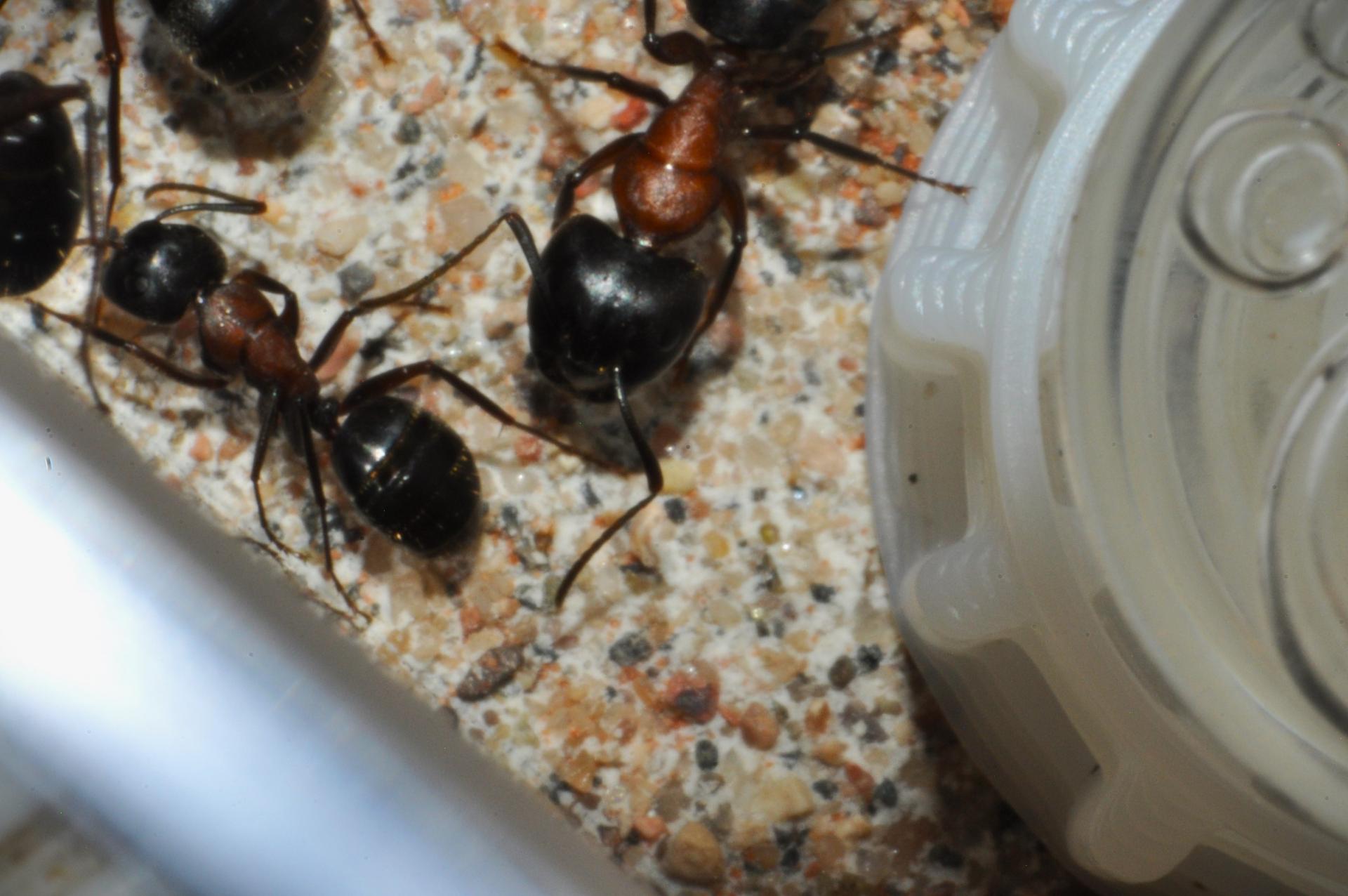
After nearly four months, I took my Colobopsis obliqua out of diapause. Here's a picture of a queen drinking sugar water
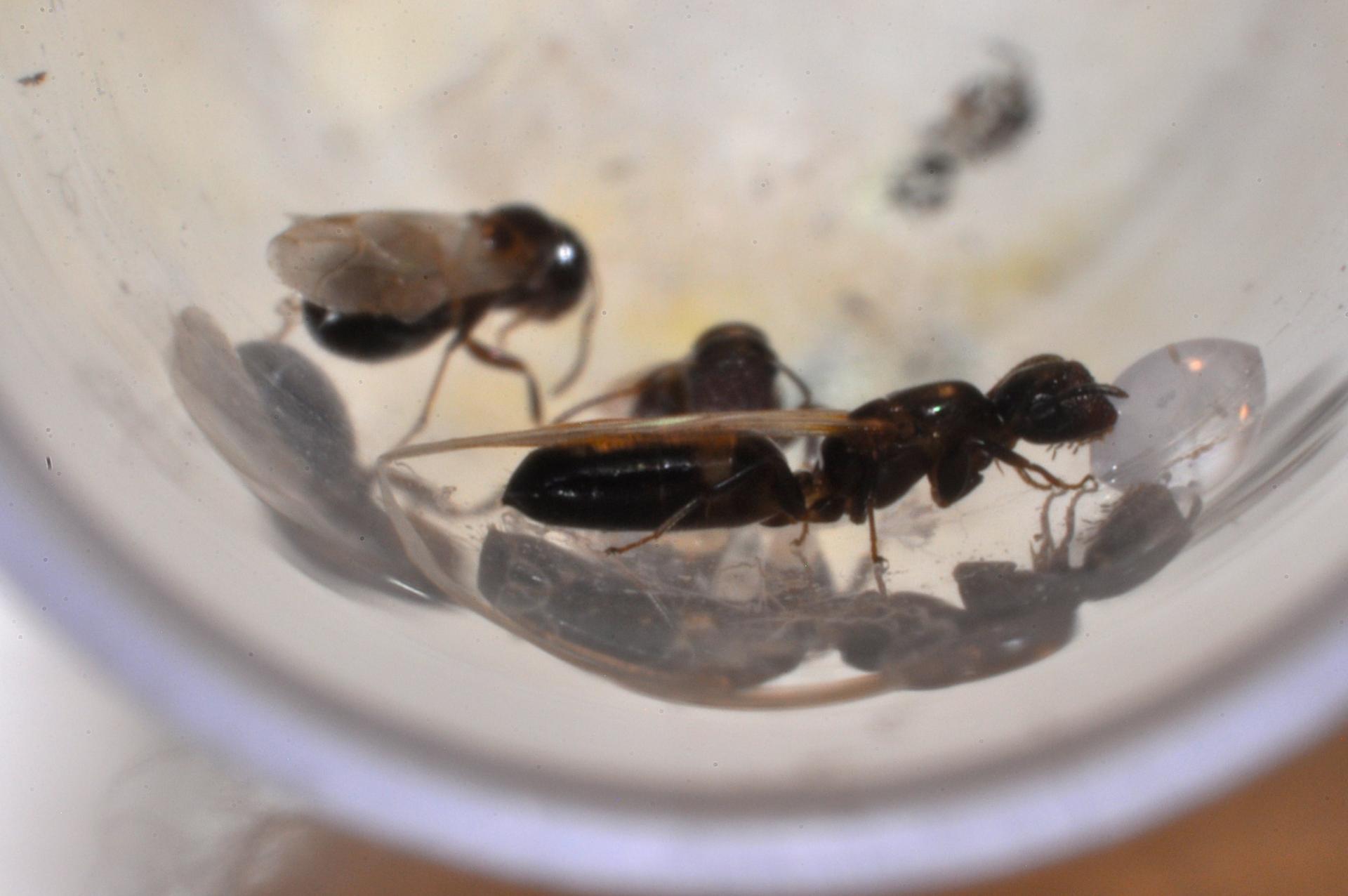
Pogonomyrmex occidentalis
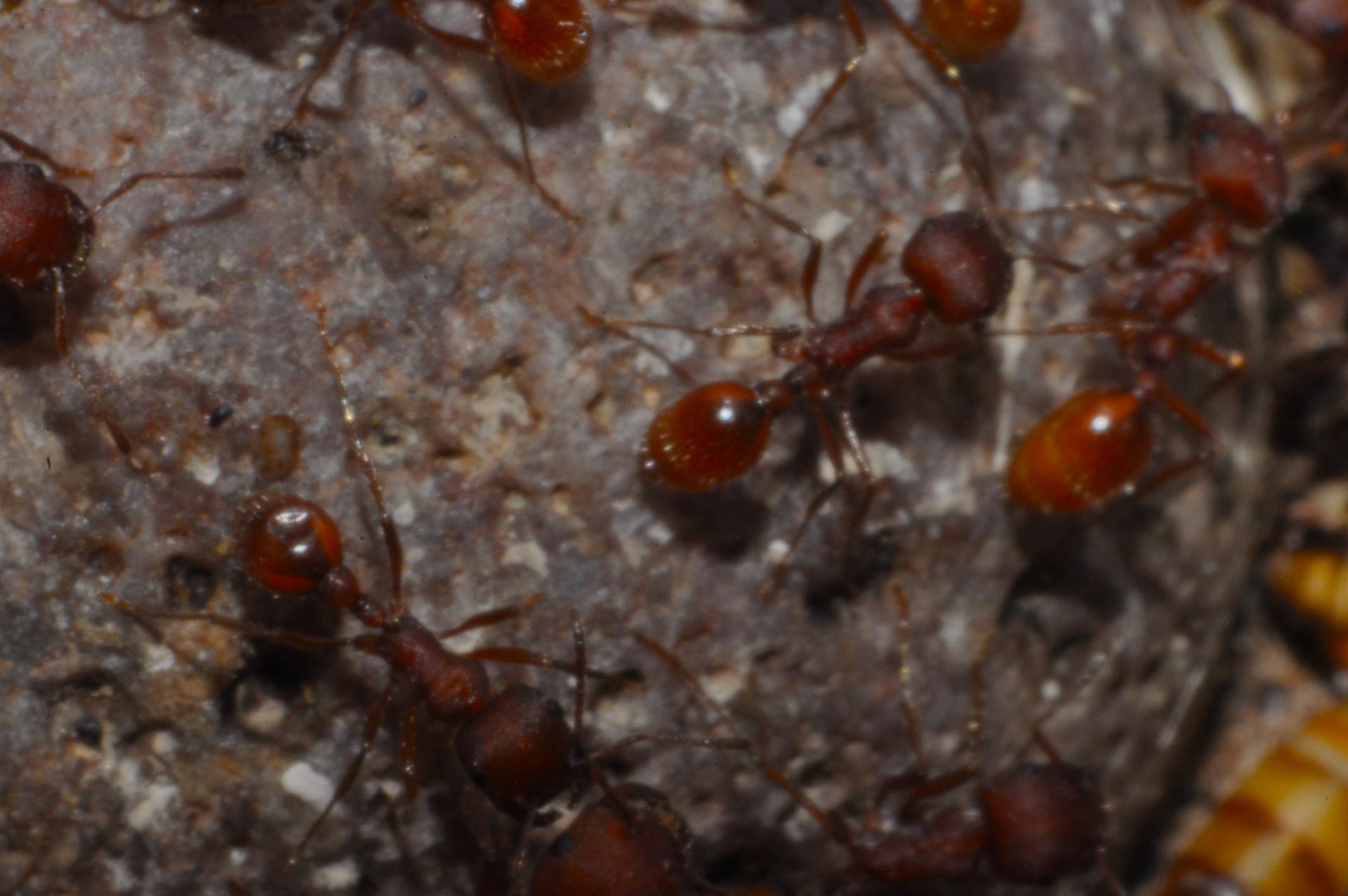
Finally, my Formica fusca-group. Seeing the red coloration on the workers' legs and antennae makes me wonder if it's argentea but I will have to key a worker to prove it. They have been getting their first workers of the year recently.
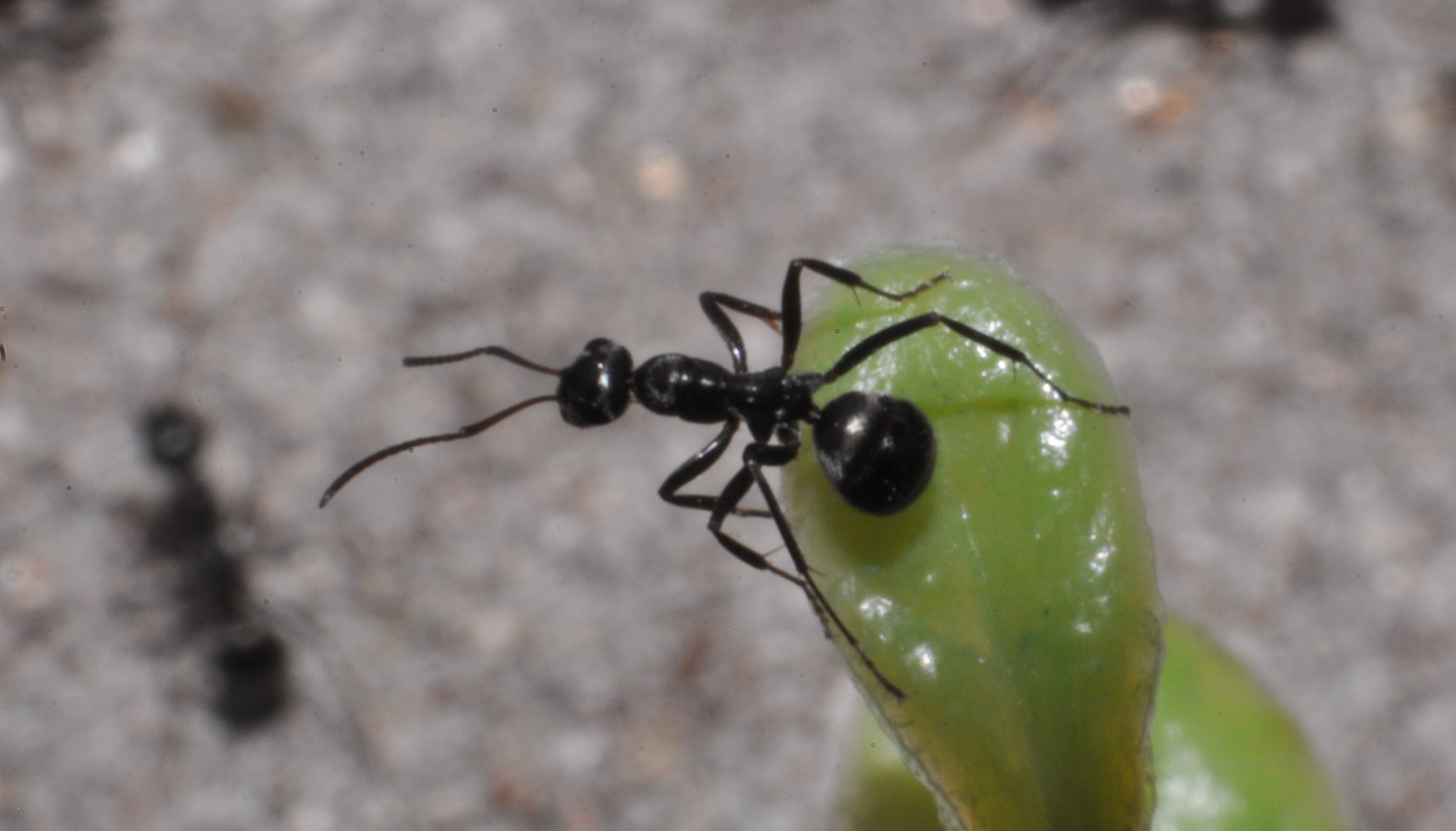
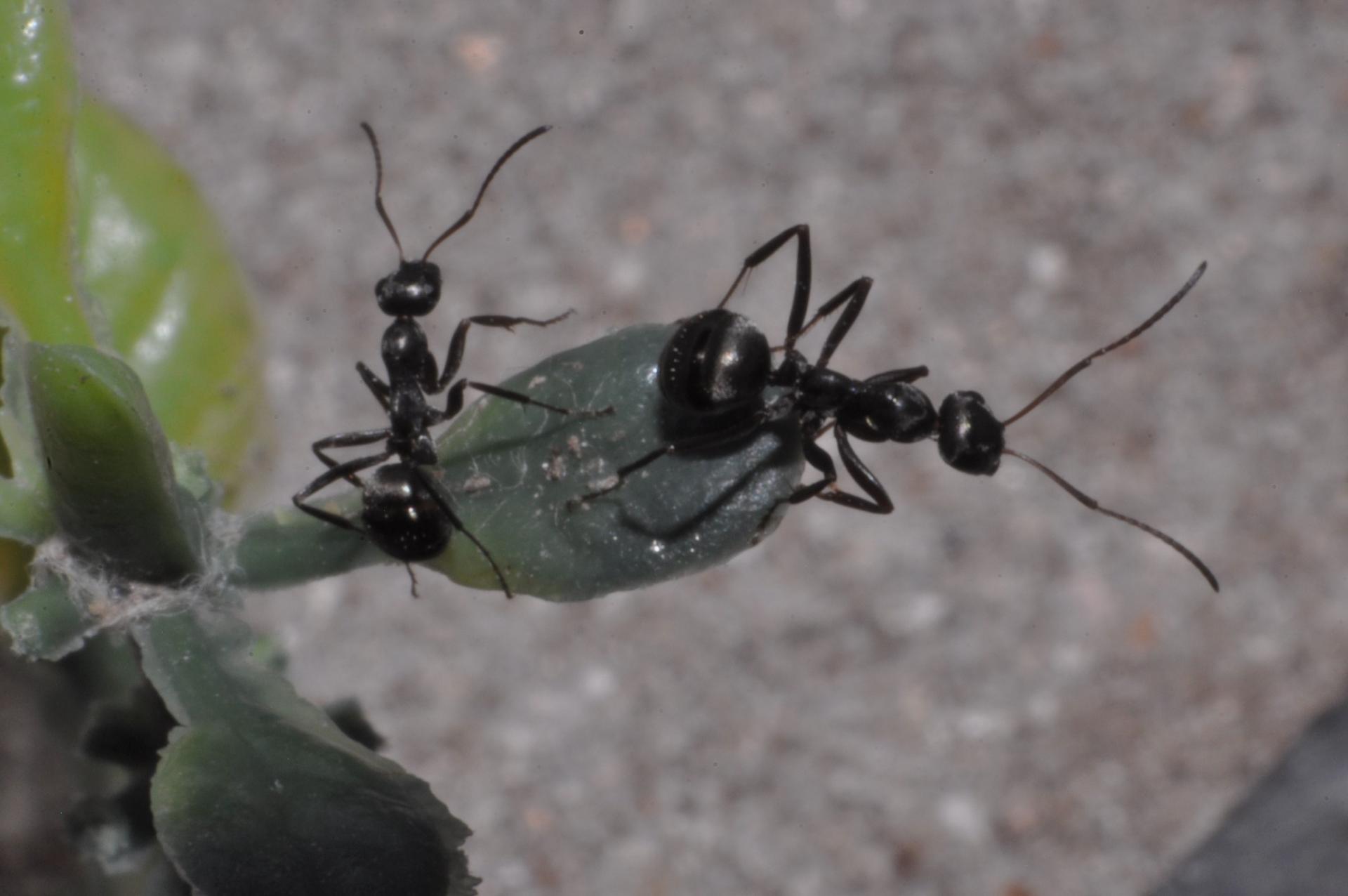
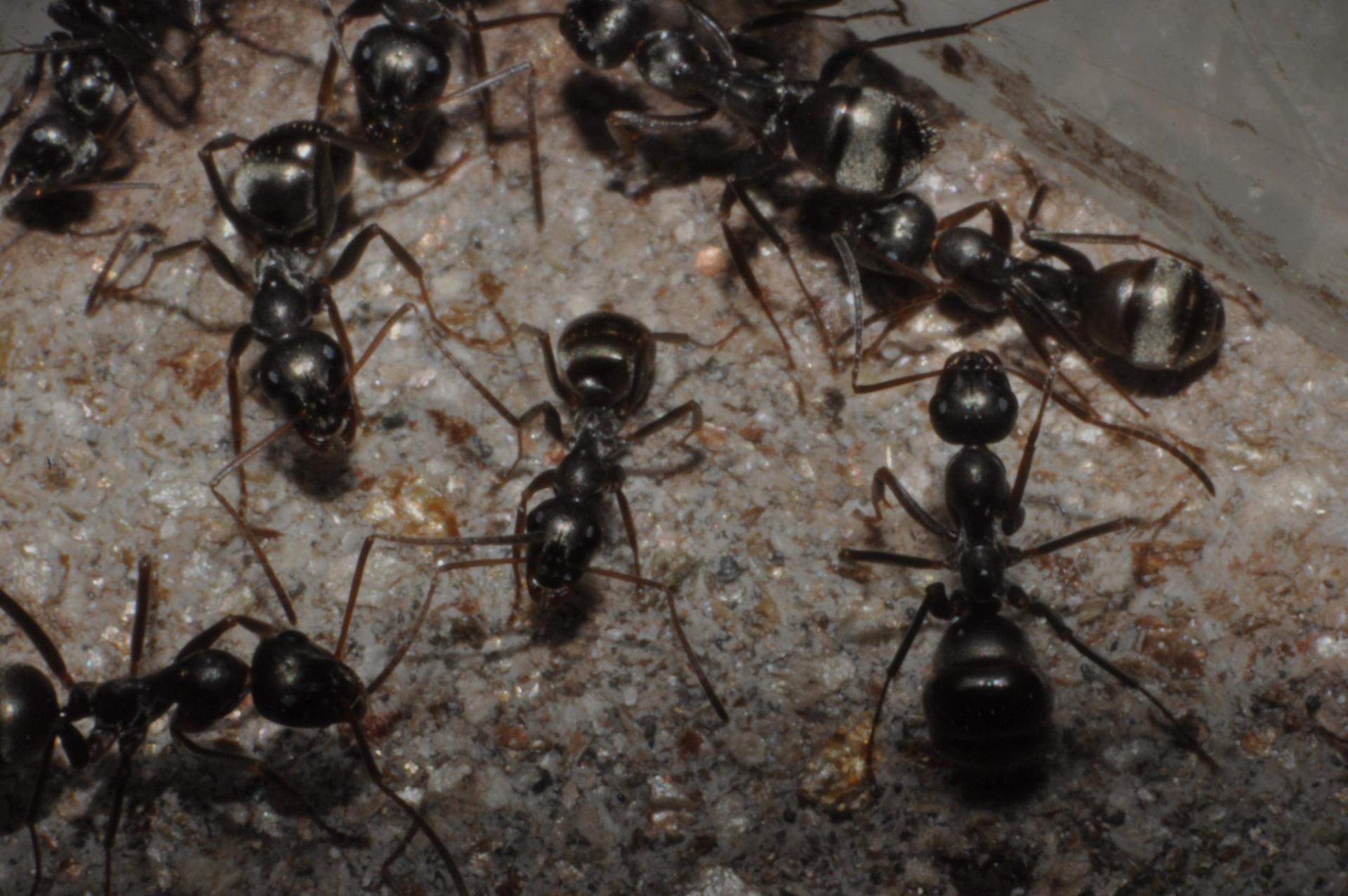
- TennesseeAnts and AntsCali098 like this
Also tagged with one or more of these keywords: pheidole bicarinata, camponotus chromaiodes, pheidole pilifera, aphaenogaster picea, aphaenogaster lamellidens, lasius americanus, myrmica incompleta, colobopsis obliqua, formica subsericea, formica pallidefulva
1 user(s) are reading this topic
0 members, 1 guests, 0 anonymous users







